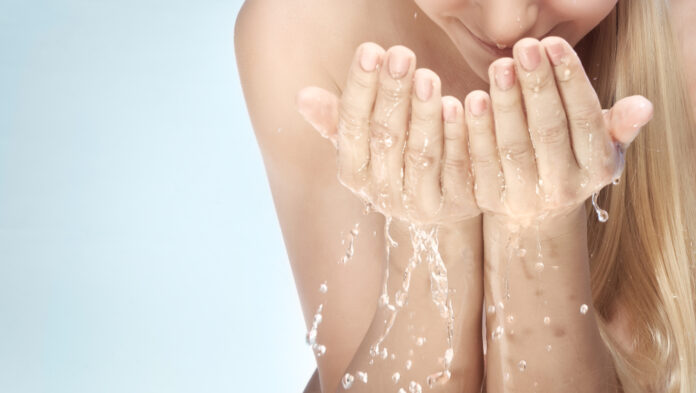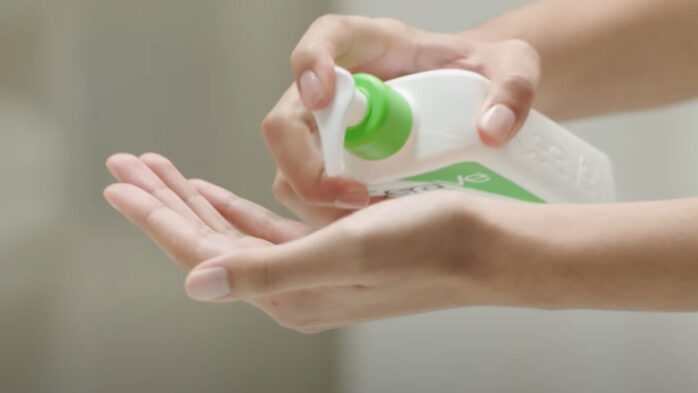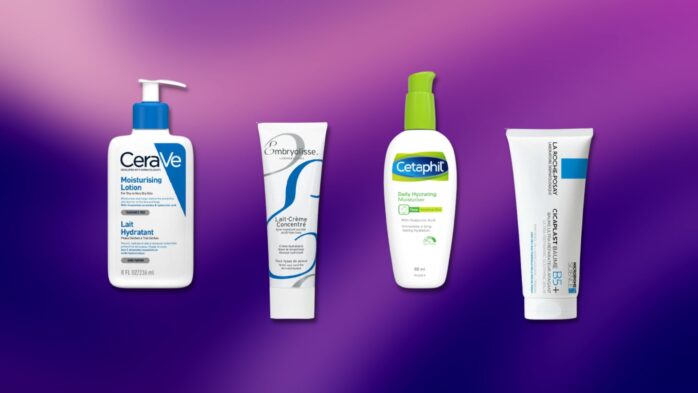
JUMP TO SECTION
Click the links below to jump to the relevant section:
First, there was skin gritting, then skin slugging, followed by skin cycling. Now the latest trend to hit TikTok is skin flooding.
Skin flooding promises to leave your skin super hydrated for longer. Unlike many of these trends, you’ll most likely already have the skincare products you need, which also makes it a cheap method to introduce to your beauty routine.
Skin flooding is a technique that involves layering lightweight moisturising products on your skin to reduce dehydration and although “skin flooding” is the term used on TikTok, the method of layering hydrating products to your skin has been known to dermatologists for a while.
This proves that it’s a method known to be successful at boosting your skin’s hydration.
Whatever your age, skin type, or skin tone, boosting your skin’s hydration levels is only ever a good thing. Hydrated skin glows better and adding moisture helps to temporarily plump out fine lines and wrinkles. Most importantly hydrated skin helps to strengthen your skin barrier.
The skin flooding method works by layering your products to deliver hydration more effectively.
It involves applying the thinnest products first – these are usually water-based – followed by thicker products that have a higher oil content.
If you have tight, itchy, or dry skin, whether that’s caused by central heating, the weather, hormonal changes, going through menopause, or something else, skin flooding is a great option for you.
The best products for skin flooding are serums that contain humectants like hyaluronic acid and glycerin. Humectants are perfect for skin flooding because they draw moisture from the deeper layers of your skin to the top layers where hydration is needed most.
Both hyaluronic acid and glycerin are fantastic for your skin barrier because they regenerate the lipids (fatty compounds) in the skin barrier and hold onto water more effectively. They also help to protect your skin from free radicals.
By layering a moisturiser on top you’re then drawing all the moisture and benefits of the previous products into your skin to keep it hydrated for hours afterward. You’ll ideally want to use a moisturiser that’s rich in ingredients like ceramides, beta-glucans, and fatty acids.
FURTHER READING: Do you have dry skin or is just dehydrated? Here’s how to tell the difference
 Shutterstock
Shutterstock The four stages of skin flooding are:
We detail more about these steps, and recommend products, below. Remember that you should also be wearing SPF every day, so that step comes after your moisturiser in the morning.
mamabella tip: It’s worth noting that your skin should remain damp throughout – do not let it dry in between stages. This is because the products involved in your skin flooding routine rely on attracting and absorbing moisture. If your skin is damp, it has more moisture to draw from. If your skin is dry, it can end up drawing moisture from the skin and it has the opposite effect.
 CeraVe
CeraVe The first step in skin flooding is to gently cleanse your skin, so that it’s clean but doesn’t lose any of its natural oils. We recommend the CeraVe Hydrating Cleanser.
Once you’ve washed your face you can add extra moisture to the skin using a mist. We’re big fans of the La Roche-Posay Thermal Water Spray (£8), but the Avene Thermal Water Spray (£15.50) and Clinique’s Moisture Surge Spray (£27) are also good options.
 Vicky Woollaston
Vicky Woollaston After cleansing your skin you’ll want to apply your skin flooding serums from thinnest to thickest.
Start with hyaluronic acid, which is the star product when it comes to skin flooding. We love the hyaluronic acid serum from The Ordinary (£7.90) because it will also give you a boost of Vitamin B5.
Whilst using hyaluronic acid for skin flooding is enough to give your skin a great boost of hydration, by adding a niacinamide serum too, you’ll get additional anti-inflammatory benefits. The Ordinary additionally offers a brilliant niacinamide serum, which includes high concentrations of vitamins and minerals.
In fact, you can see how The Ordinary HA and Niacinamide serums compare against each other in our best face serum group test results.
This stage of skin flooding would also be where you apply your retinol serum or similar.
mamabella tip: The key to skin flooding is to not blot, fan, or let the products soak in fully. You also need to be careful not to overdo your skin flooding, especially if you have acne, as it can make your skin worse. If you have acne we would recommend starting out with an oil-free cleanser to help prevent breakouts.
 mamabella | mamabella
mamabella | mamabella To finish off your skin flooding routine, apply your moisturiser. If you’re doing your skin flooding routine at night then this Omega+ Complex moisturiser (£35) from Paula’s Choice is a great option because it’s rich and packed with omega fatty acids.
A cheaper option is the CeraVe Moisturising Lotion (£11.50).
If you’re in the market for a new moisturiser, or are yet to find one that suits your skin, we recently embarked on a major moisturiser group test. We’ve tested more than 90 moisturisers (and counting) and the full ranking is available via our best moisturiser page.
FURTHER READING: Paula’s Choice BHA Exfoliant review: Can the leave-on exfoliator fix our oily, spotty and sensitive skin?

Kat is a freelance journalist, photographer, and the founder of Simply Gender Free – a company dedicated to smashing gender stereotypes in kids’ products. As a mum of two, Kat is passionate about making the world a better place for the next generation
